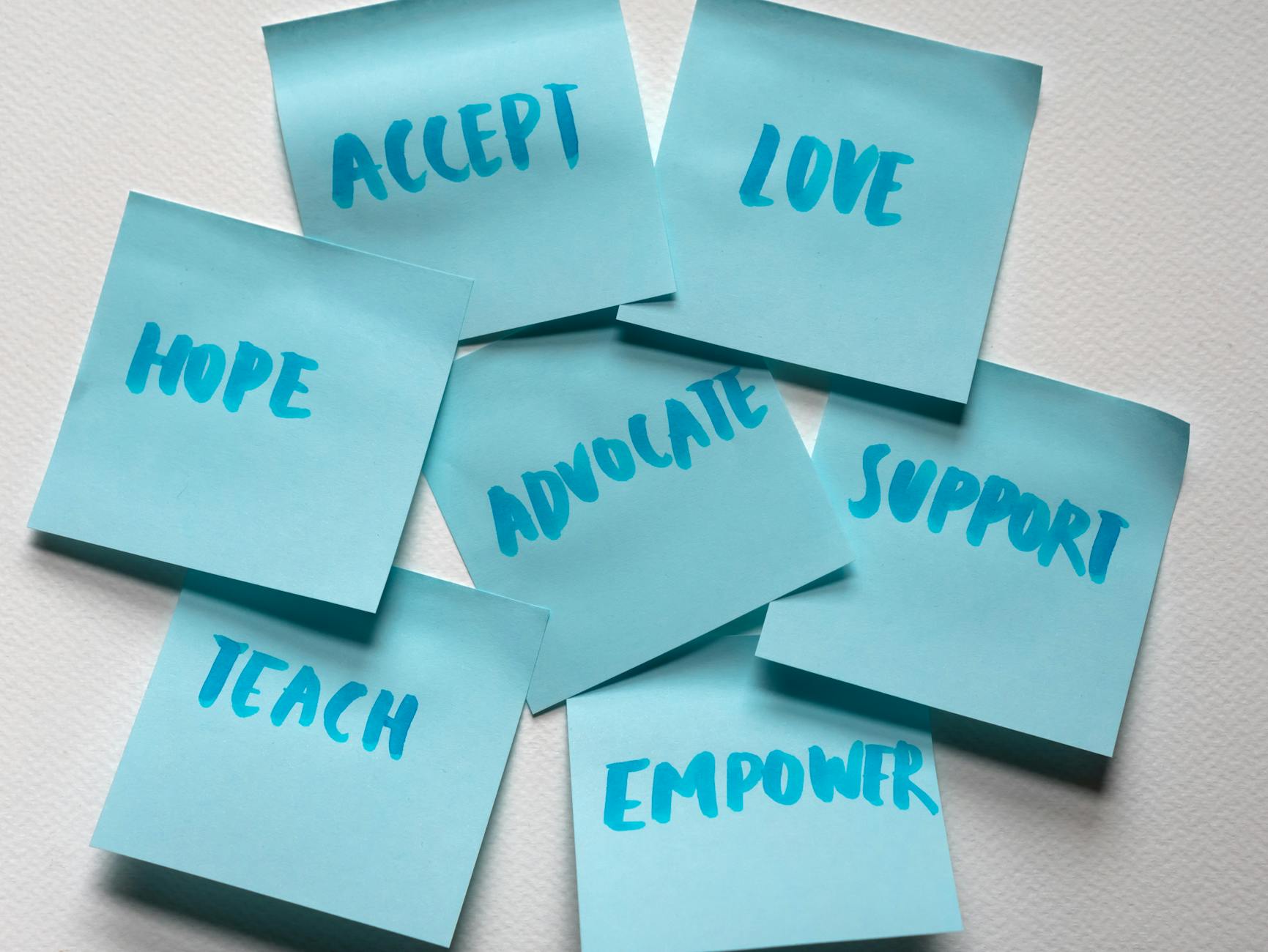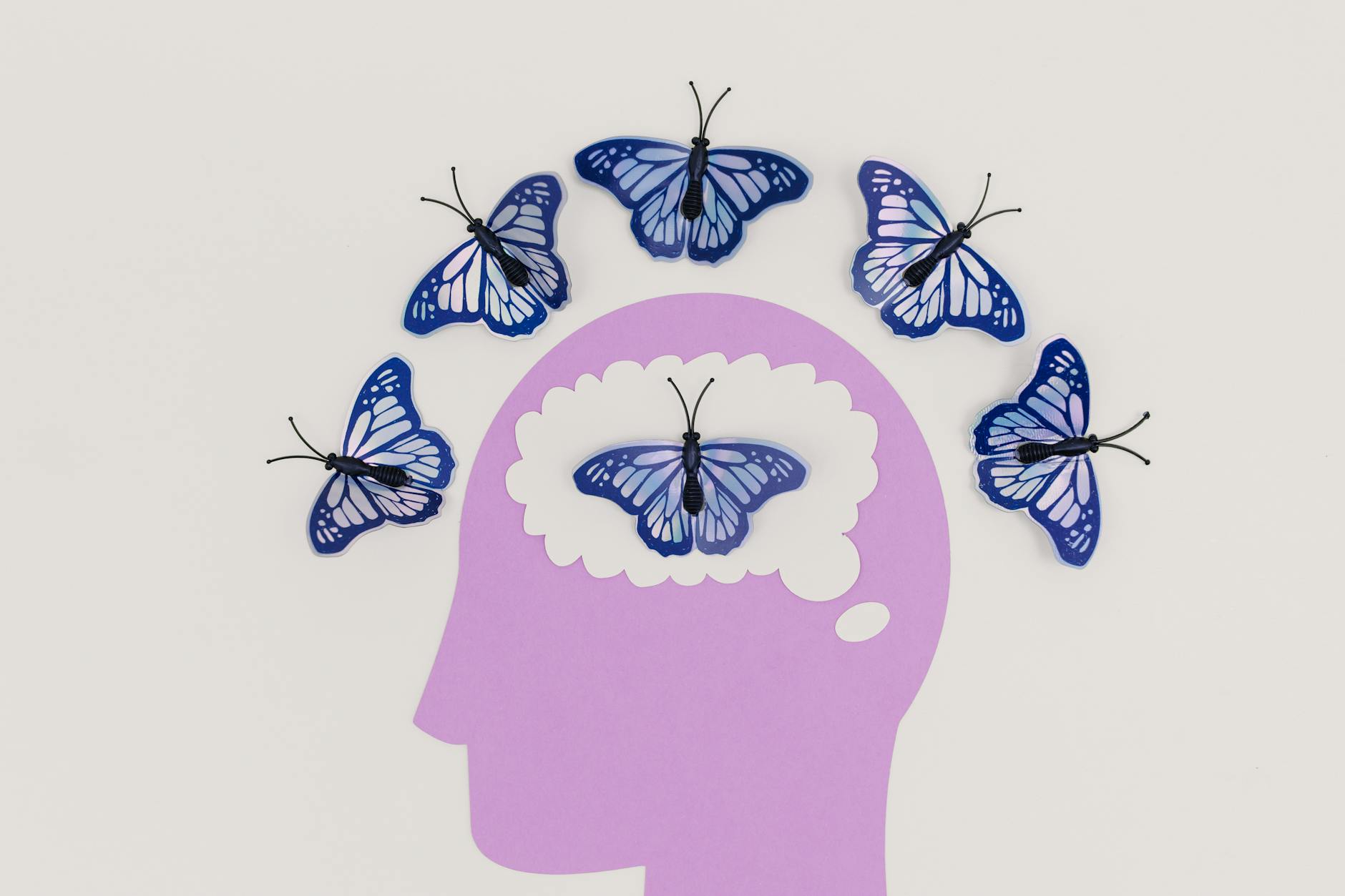
In a world filled with constant challenges and pressures, negative thinking patterns can easily take hold, affecting our mental well-being and overall quality of life. These destructive thought cycles often feel inescapable, leaving many trapped in a spiral of pessimism and self-doubt. But what if there was a way to break free from this mental prison and embrace a more positive outlook?
Imagine waking up each day with a renewed sense of optimism, armed with the tools to tackle life's obstacles head-on. Picture yourself navigating through difficulties with resilience and emerging stronger on the other side. This isn't just a distant dream, it's a reality that can be achieved through the power of positive thinking. By understanding the root causes of negative thought patterns and learning practical techniques to overcome them, anyone can cultivate a mindset that fosters growth, happiness, and success.
In this comprehensive guide, we'll explore the journey from negative thinking to positive mindset mastery. From unraveling the complexities of pessimistic thought cycles to discovering powerful tools for emotional resilience, readers will gain invaluable insights into transforming their mental landscape. Let's embark on this transformative path and unlock the secrets to a more fulfilling, optimistic life.

Understanding Negative Thinking Patterns
A. Identifying Common Cognitive Distortions
Cognitive distortions are systematic patterns of deviation from rational thought that can significantly impact one's perception of reality. These distortions often lead to negative thinking patterns and can be detrimental to mental health. Some of the most prevalent cognitive distortions include:
- All-or-Nothing Thinking
- Overgeneralization
- Mental Filter
- Discounting the Positive
- Jumping to Conclusions
- Magnification or Minimization
- Emotional Reasoning
- Should Statements
- Labeling
- Personalization
Understanding these distortions is crucial for recognizing and addressing negative thinking patterns. For instance, all-or-nothing thinking involves viewing situations in black-and-white terms, while overgeneralization extrapolates a single negative event to a never-ending pattern of defeat.
 |
| Belly Slimming Patch for Men & Women with Natural Plant Extracts - Comfortable & Safe Belly Slimming Stickers |
B. Recognizing Automatic Negative Thoughts
Automatic negative thoughts (ANTs) are involuntary, often irrational thoughts that pop into one's mind without conscious effort. These thoughts can be particularly insidious as they often go unnoticed, yet significantly influence mood and behavior. Common characteristics of ANTs include:
| Characteristic | Description |
|---|---|
| Rapid Onset | Occur quickly and spontaneously |
| Believability | Often accepted as true without question |
| Negativity | Typically pessimistic or self-critical |
| Repetitiveness | Tend to follow similar patterns |
Recognizing these thoughts is the first step in challenging and ultimately changing them. It often requires mindful self-observation and practice to identify ANTs as they occur.
C. The Impact of Negative Thinking on Mental Health
Negative thinking patterns can have profound effects on mental health. Persistent negative thoughts contribute to:
- Increased stress and anxiety
- Lowered self-esteem
- Decreased motivation
- Impaired problem-solving abilities
- Higher risk of depression
- Weakened immune system response
Moreover, negative thinking can create a self-fulfilling prophecy, where pessimistic expectations lead to behaviors that reinforce those expectations, creating a cycle of negativity.
D. How Negative Patterns Develop Over Time
Negative thinking patterns typically develop gradually through a combination of factors:
- Early life experiences
- Cultural and societal influences
- Traumatic events
- Chronic stress
- Biological predispositions
These patterns often become deeply ingrained, forming neural pathways that strengthen with repetition. As these pathways become more established, negative thoughts become increasingly automatic and challenging to counteract.
Understanding the development of these patterns is essential for breaking the cycle. It highlights the importance of early intervention and the need for consistent effort in rewiring thought processes. Recognizing that these patterns are learned behaviors also emphasizes that they can be unlearned and replaced with more positive, constructive thinking habits.
By gaining insight into the nature of negative thinking patterns, individuals can take the first crucial steps towards cultivating a more positive mindset. This understanding forms the foundation for implementing effective strategies to challenge and transform detrimental thought processes, ultimately leading to improved mental health and overall well-being.
Breaking the Cycle of Negativity
Now that we understand negative thinking patterns, let's explore effective strategies to break free from this cycle and cultivate a more positive mindset.
Challenging Negative Thoughts
One of the most powerful ways to break the cycle of negativity is to challenge our negative thoughts. This involves:
- Identifying negative thoughts
- Examining the evidence for and against these thoughts
- Replacing them with more balanced, realistic alternatives
| Negative Thought | Challenge | Balanced Alternative |
|---|---|---|
| "I always fail at everything" | Is this really true? Can I think of any successes? | "I've had both successes and failures, like everyone else" |
| "Nobody likes me" | Do I have any evidence for this? What about my friends and family? | "Some people may not like me, but others do appreciate me" |
| "Things will never get better" | How can I be certain about the future? Have things improved in the past? | "While things are difficult now, there's potential for improvement" |
Practicing Mindfulness and Self-Awareness
Mindfulness is a powerful tool for breaking negative thought patterns. It involves:
- Observing thoughts without judgment
- Focusing on the present moment
- Developing greater self-awareness
By practicing mindfulness regularly, we can create space between our thoughts and our reactions, allowing us to respond more consciously rather than reactively.
Developing a Growth Mindset
A growth mindset is crucial for overcoming negative thinking patterns. It involves:
- Believing in the potential for personal growth and improvement
- Viewing challenges as opportunities for learning
- Embracing effort as a path to mastery
- Learning from criticism and setbacks
By cultivating a growth mindset, we can shift our perspective from one of limitation to one of possibility and potential.
Reframing Negative Situations
Reframing is a powerful technique for breaking the cycle of negativity. It involves:
- Looking for alternative perspectives on a situation
- Finding potential benefits or opportunities in challenges
- Focusing on what can be learned or gained from difficult experiences
For example:
| Negative Situation | Reframe |
|---|---|
| Losing a job | Opportunity to explore new career paths |
| Failing an exam | Chance to identify areas for improvement and study more effectively |
| Relationship breakup | Time for personal growth and self-discovery |
By consistently applying these strategies, we can gradually break free from the cycle of negativity and cultivate a more positive, resilient mindset. This process takes time and practice, but the benefits to our mental health and overall well-being are significant. As we become more adept at challenging negative thoughts, practicing mindfulness, developing a growth mindset, and reframing situations, we'll find ourselves better equipped to handle life's challenges and maintain a more optimistic outlook.

Cultivating Positive Thinking Habits
Practicing Gratitude Daily
Incorporating gratitude into your daily routine is a powerful way to shift your mindset towards positivity. Start by keeping a gratitude journal, where you note down three things you're thankful for each day. This simple practice can significantly improve your overall outlook on life.
Surrounding Yourself with Positive Influences
The company you keep plays a crucial role in shaping your thoughts and attitudes. Actively seek out relationships with optimistic individuals who inspire and motivate you. Similarly, curate your media consumption to include uplifting content that promotes personal growth and positivity.
Engaging in Positive Self-Talk
Your internal dialogue has a profound impact on your mindset. Challenge negative self-talk by consciously replacing it with affirming and encouraging statements. Develop a list of personal affirmations and repeat them daily to reinforce positive thinking patterns.
Setting and Celebrating Small Goals
Breaking larger objectives into smaller, achievable goals can boost your confidence and motivation. Create a system for tracking your progress and celebrate each milestone, no matter how small. This practice reinforces a positive feedback loop and cultivates a success-oriented mindset.
Visualizing Success and Positive Outcomes
Visualization is a powerful technique used by many successful individuals. Spend a few minutes each day imagining yourself achieving your goals and experiencing positive outcomes. This practice can boost your confidence and prime your mind for success.
To better understand the impact of these positive thinking habits, consider the following comparison:
| Habit | Benefits | Implementation Tips |
|---|---|---|
| Gratitude Practice | Increases happiness, reduces stress | Keep a daily gratitude journal, share appreciation with others |
| Positive Influences | Improves mood, fosters personal growth | Attend motivational events, join supportive communities |
| Positive Self-Talk | Boosts self-esteem, reduces anxiety | Create personalized affirmations, practice mindful self-compassion |
| Goal Setting | Enhances motivation, builds confidence | Use SMART goals, maintain a progress tracker |
| Visualization | Improves performance, reduces fear | Create a vision board, practice guided imagery |
Implementing these habits requires consistency and patience. Start by incorporating one or two practices into your daily routine and gradually build up. Remember that cultivating a positive mindset is an ongoing process, and it's normal to experience setbacks. The key is to persevere and maintain a commitment to personal growth.
To maximize the effectiveness of these habits, consider the following tips:
- Set specific times for each practice (e.g., gratitude journaling before bed)
- Use technology to your advantage (apps for affirmations, goal tracking)
- Find an accountability partner to share your journey
- Regularly reassess and adjust your practices as needed
- Be patient and kind to yourself throughout the process
By consistently applying these positive thinking habits, you'll gradually rewire your brain to default to more optimistic thought patterns. This shift in mindset can lead to improved mental health, increased resilience, and greater overall life satisfaction.

Tools and Techniques for Positive Thinking
Now that we've explored ways to cultivate positive thinking habits, let's delve into specific tools and techniques that can help reinforce and maintain a positive mindset.
A. Cognitive Behavioral Therapy (CBT) Exercises
Cognitive Behavioral Therapy is a powerful approach to reshaping thought patterns. Here are some effective CBT exercises:
- Thought Record: Identify negative thoughts, evaluate their validity, and replace them with balanced alternatives.
- Behavioral Experiments: Test the accuracy of negative beliefs through real-life situations.
- Cognitive Restructuring: Challenge and reframe distorted thinking patterns.
| CBT Exercise | Purpose | Implementation |
|---|---|---|
| Thought Record | Identify and challenge negative thoughts | Daily journaling |
| Behavioral Experiments | Test negative beliefs | Weekly challenges |
| Cognitive Restructuring | Reframe distorted thinking | Regular self-reflection |
B. Affirmations and Positive Mantras
Positive affirmations can rewire the brain for optimism. Consider these techniques:
- Create personalized affirmations that resonate with your goals and values.
- Repeat affirmations daily, preferably in front of a mirror.
- Use present tense and positive language in your affirmations.
C. Journaling for Self-Reflection
Journaling is a powerful tool for self-discovery and positive thinking. Try these journaling techniques:
- Gratitude Journal: Record three things you're grateful for daily.
- Achievement Log: Document small wins and accomplishments.
- Future Vision Journal: Describe your ideal future in detail.
D. Meditation and Relaxation Techniques
Meditation and relaxation practices can calm the mind and foster positivity. Consider these methods:
- Mindfulness Meditation: Focus on the present moment without judgment.
- Progressive Muscle Relaxation: Systematically tense and relax muscle groups.
- Visualization: Imagine positive scenarios or peaceful environments.
Incorporating these tools and techniques into your daily routine can significantly enhance your positive thinking efforts. Consistency is key in reaping the benefits of these practices. As you become more adept at using these tools, you'll find it easier to maintain a positive outlook even in challenging situations.
Remember that different techniques may work better for different individuals. Experiment with various approaches to find the combination that resonates most with you. With regular practice, these tools can become second nature, helping you build a strong foundation for emotional resilience.

Building Emotional Resilience
In the journey towards a positive mindset, building emotional resilience is a crucial step. This skill allows individuals to bounce back from adversity and maintain a balanced outlook even in challenging times.
Developing Coping Strategies for Stress
Stress is an inevitable part of life, but how we handle it can make all the difference. Effective coping strategies can transform stress from a debilitating force into a manageable aspect of daily life.
| Coping Strategy | Description | Benefits |
|---|---|---|
| Mindfulness Meditation | Focusing on the present moment | Reduces anxiety, improves focus |
| Physical Exercise | Regular physical activity | Releases endorphins, improves mood |
| Time Management | Prioritizing tasks and setting realistic goals | Reduces overwhelm, increases productivity |
| Social Support | Connecting with friends and family | Provides emotional comfort, offers new perspectives |
Implementing these strategies consistently can significantly enhance one's ability to manage stress effectively.
Learning from Failures and Setbacks
Failures and setbacks are not roadblocks but stepping stones to success. Adopting a growth mindset allows individuals to view these experiences as valuable learning opportunities.
- Analyze the situation objectively
- Identify areas for improvement
- Set new goals based on lessons learned
- Celebrate small wins along the way
By reframing failures as feedback, individuals can maintain motivation and continue progressing towards their goals.
Cultivating Self-Compassion
Self-compassion is a powerful tool in building emotional resilience. It involves treating oneself with the same kindness and understanding that one would offer a close friend.
- Practice self-kindness: Replace self-criticism with gentle understanding
- Recognize common humanity: Understand that imperfection is part of the shared human experience
- Mindful awareness: Observe thoughts and feelings without judgment
Cultivating self-compassion leads to greater emotional well-being and resilience in the face of challenges.
Embracing Change and Uncertainty
Change is constant, and uncertainty is a natural part of life. Developing the ability to adapt and thrive in changing circumstances is key to emotional resilience.
- Cultivate flexibility in thinking and behavior
- Focus on what can be controlled
- Practice acceptance of what cannot be changed
- Seek opportunities for growth in new situations
By embracing change and uncertainty, individuals can develop a sense of confidence in their ability to navigate life's unpredictable nature.
Building emotional resilience is an ongoing process that requires patience and practice. As these skills are developed, individuals will find themselves better equipped to maintain a positive mindset even in the face of life's challenges. With a strong foundation of emotional resilience, the journey towards cultivating and maintaining positive thinking habits becomes more achievable and sustainable.

Negative thinking patterns can significantly impact one's mental health and overall well-being. By recognizing these patterns and actively working to break the cycle of negativity, individuals can cultivate a more positive mindset. Implementing tools and techniques such as mindfulness, gratitude practices, and cognitive restructuring can help reshape thought processes and foster a more optimistic outlook on life.
Developing emotional resilience is crucial for maintaining a positive mindset in the face of challenges. By consistently practicing positive thinking habits and utilizing the strategies discussed, it becomes possible to overcome negative thought patterns and embrace a more fulfilling, optimistic approach to life. Remember, cultivating a positive mindset is an ongoing process that requires patience and dedication, but the benefits to mental health and overall happiness make it a worthwhile endeavor.
